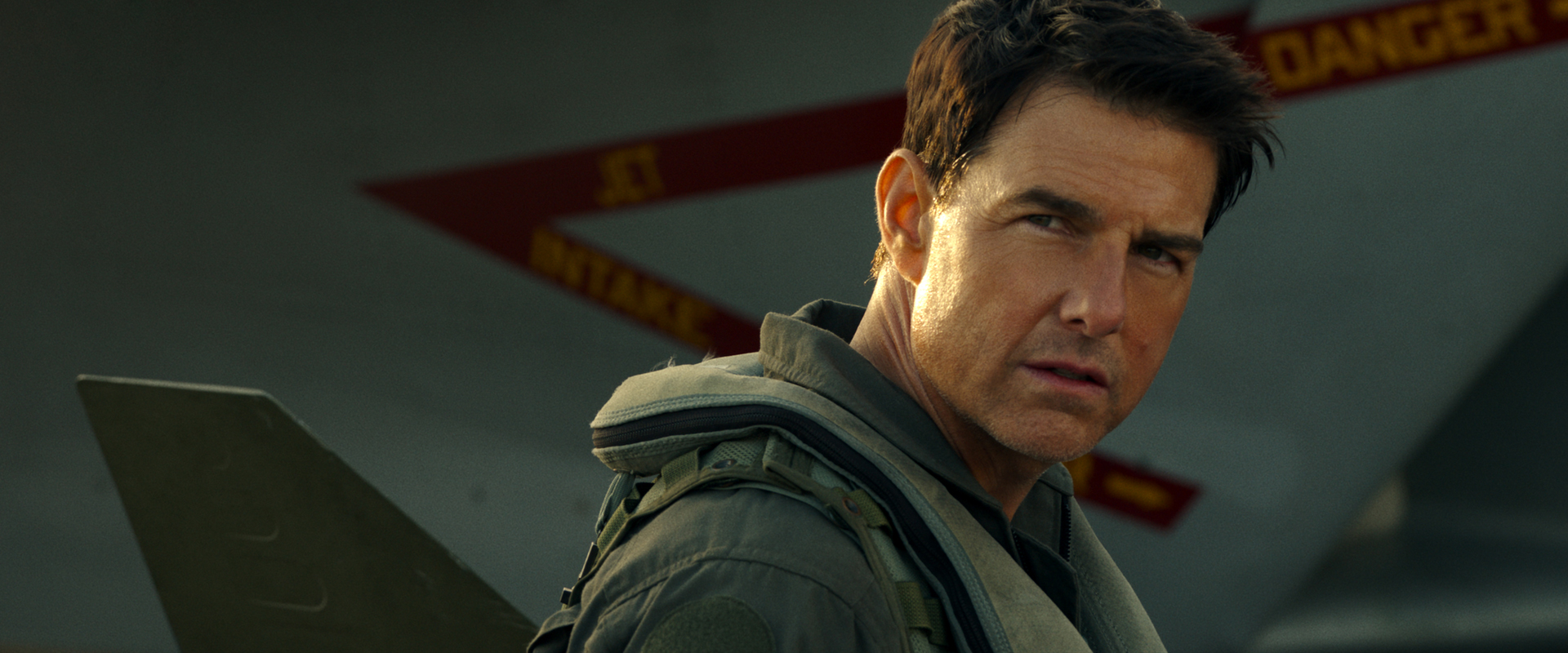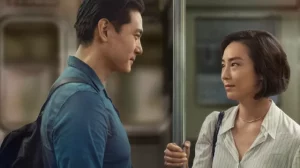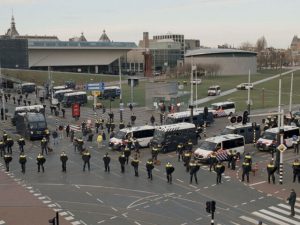
Top Gun: Maverick (2022)
Feel the need … the need for speed.
As Top Gun: Maverick sits on an impressive Rotten Tomatoes score of 97%, with an average rating of 8.3 out of 10, it behooves us as canny observers of pop culture to ask a few pertinent questions, chief among them this: are you all on fucking crack?
Not that the specifics matter. It could be crack, it could be meth, it could be opioids or paint thinner, or any number of deeply harmful psychoactive substances that have driven the critical community to shit their collective bed and declare this lazy, uninspired re-tread not just one of the finest films of the year, but apparently the best of star and producer Tom Cruise’s career. I’m no stranger to being outside the critical consensus — in fact, everyone in this game should be familiar with that feeling, if only to get a measure of how strong their own artistic convictions really are — but this one has me genuinely baffled. Baffled in a way that makes me seriously wonder if we saw the same film.
 100vw, 616px” /></a><figcaption id=) This man qualifies for a seniors’ discount.
This man qualifies for a seniors’ discount.Decades after the events of Tony Scott’s Top Gun (1986), Captain Pete “Maverick” Mitchell (Tom Cruise) is enjoying life as a test pilot in the high deserts of California when old mate Tom “Iceman” Kazansky (Val Kilmer), now an admiral and Commander of the US Pacific Fleet, taps him for a special assignment: return to Top Gun, the Navy’s legendary air combat school, and train a new generation of pilots for a secret mission. Among them is Jake “Hangman” Seresin (Glen Powell), Natasha “Phoenix” Trace (Monica Barbaro), and, most importantly, Bradley “Rooster” Bradshaw (Miles Teller), the son of the late Nick “Goose” Bradshaw (Anthony Edwards), who died on Maverick’s watch back in the first film. Rooster apparently holds no grudge against his father for naming him Bradley Bradshaw and seems to have inherited his mustache. While Vice Admiral Beau “Cyclone” Simpson (Jon Hamm) bristles at Maverick’s unconventional methods, and the young hotshots doubt if the old dog can teach them any new tricks, Maverick proves that he’s still got the right stuff, leading them to victory and romancing Jennifer Connelly’s MILF-y bar owner, Penny Benjamin, along the way.
That’s it. That’s your lot. If you want to watch Tom Cruise as Maverick prove that he’s still cool as fuck as he approaches sixty years of age while the universe of the film wraps itself around that aim in order to accommodate it, you’re in luck. If you want anything more, pick another movie.
 100vw, 616px” /></a><figcaption id=) ‘Great Balls of Ire’
‘Great Balls of Ire’Now, that’s Storytelling 101, and I’d normally never design to drop such a basic set of concepts on you. Still, it seems important to remind ourselves of these tenets because I can’t tell you what Pete “Maverick” Mitchell wants in the conventional dramatic sense. With that in mind, any obstacles in his path are meaningless.
For sure, there’s threat to life and limb in the big action climax, but it never feels palpable enough to matter. There’s tension between him and Rooster, but the film decides to locate it in Maverick blocking Rooster’s admission to flight school at some point between the two films, instead of, say, Rooster resenting Maverick for possibly killing his father. Rooster doesn’t even get to ask Maverick where the fuck he’s been for most of his life. You could argue that Rooster’s stated beef over Maverick messing with his career is meant to stand in for a lot of unspoken conflict, but given the film is never so subtle elsewhere, I’d say it’s a stretch here. For all that, Maverick the film never shies away from milking nostalgia; it’s a bit telling that Meg Ryan’s Carole, Goose’s wife and Rooster’s mother, is conveniently dead and not on hand to take our hero to task for the price his “last real cowboy” posturing has wrought on the people he ostensibly cares for. At least she rates a mention; Kelly McGillis’ Charlie, the love interest in the first film, has been scrubbed from the record.
 100vw, 616px” /></a><figcaption id=) From Mad Men to Maverick
From Mad Men to MaverickThis is the pattern of the film. It’s a work solely dedicated to making Cruise-as-Maverick look cool, to the point where even the possibility of failure, of being wrong, of even harboring regrets about his choices in life, is either entirely absent or downplayed so much as to be nigh-invisible. This is not a movie about Maverick dealing with the process of aging, but rather it feels like this is Cruise (who is sixty on July 3rd) denying that it’s happening to him. There’s never a suggestion that Maverick might have missed a trick, that he might be slowing down, that the changing battlespace has no room for someone of his vintage and caliber.
The closest it comes is an early scene before the plot proper has even kicked off, where Ed Harris’ Rear Admiral (and we’ll circle back around to him presently) declares he wants to mothball the experimental aircraft program Maverick is driving planes for in favor of focusing on drone warfare, setting up a man vs. machine thematic conflict that is never, ever mentioned again, much less dramatized.
 100vw, 616px” /></a><figcaption id=) Cruise scans the horizon for his credibility.
Cruise scans the horizon for his credibility.And all that might be forgivable if the film wasn’t stultifying derivative, constantly referencing both its predecessor and other, better films. The nadir for me was when they set up Mav thinking about the time Goose played Jerry Lee Lewis’ “Great Balls of Fire” on the bar piano by having his kid do exactly the same thing in a costume that, if it’s not identical, is close enough to make no difference, but your mileage may vary; after all, the beach football scene, which references the iconic volleyball scene, sucks too. The opening scenes ape Philip Kaufman’s The Right Stuff (1983) willfully and poorly, while the big secret mission, which involves bombing a uranium enrichment facility high in the mountains, is just the Death Star trench run from Star Wars (1977), and little else besides. In between, the film has the gall to introduce Connolly’s Penny while David Bowie croons on the jukebox, which has the surely unintended effect of reminding the viewer that yes, Labyrinth (1986) is a pretty good flick and you could actually be watching it now instead of … well, this.
I personally don’t think it’s possible to spoil a movie about as complex as a two-piece Duplo set, but I’m delving into some third-act material now, so feel free to hit the ejector seat if that’s important to you.
 100vw, 616px” /></a><figcaption id=) Goose may be gone, but his mustache lives on.
Goose may be gone, but his mustache lives on.A reconditioned F-14 Tomcat.
Just like in the original Top Gun.
Never mind that the movie has gone to great lengths to tell us that the bad guys are fielding advanced fifth-generation fighter crafts. Never mind that the odds of these two assholes finding this particular plane in this particular location are absolutely astronomical. Never mind that this contrivance — Maverick and Goose Jr. flying together in the plane from the first movie! — is so on the nose that whoever first scribbled it down deserves a public flogging, and whoever signed off on it deserves two. Apparently, it was so important to put Maverick behind the stick of a Tomcat that it doesn’t matter if it’s in no way justified by anything in the goddamn film. Maverick brings it on home, everybody cheers, music swells, credits roll, I vomit.
 100vw, 616px” /></a><figcaption id=) Wasting Jennifer Connelly in a throwaway role is actually a war crime.
Wasting Jennifer Connelly in a throwaway role is actually a war crime.But that doesn’t make Top Gun: Maverick a good film. I’m reminded of the initial flurry of five-star reviews for Star Wars Episode 1: The Phantom Menace (1999), when everyone was just so darn excited to be returning to that galaxy far, far away that they didn’t notice that the method of travel was a great honking turd of a film until they’d already filed their copy. I suspect — and I could be wrong, but I doubt it — that a lot of gushing Maverick takes will be quietly walked back when the recency bias fades, and we can judge the film by what it actually is and not by what it reminds us of.
Still, it was nice to see Val Kilmer again.
2 / 5 – Average
Reviewed by Travis Johnson
Top Gun: Maverick is released through Paramount Pictures Australia


